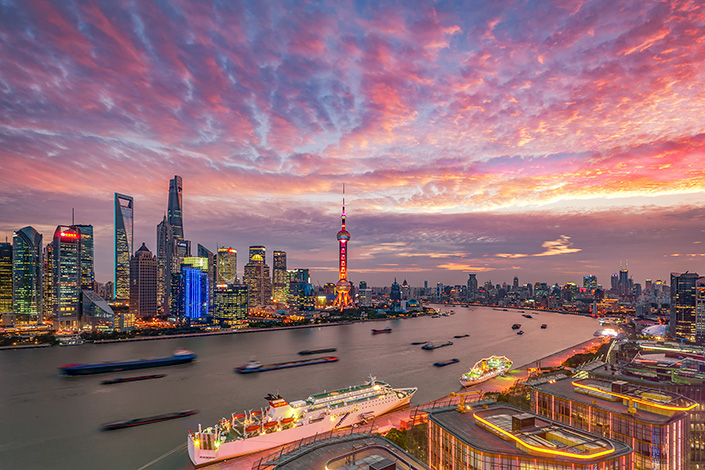
On China’s economy, gloom and doom is all Western commentators see. They fret China’s real estate slowdown, weaker domestic data and reactive Covid measures, arguing only exports sustain growth. Now, with many fearing a global recession, they also fear these teetering — potentially unleashing the long-feared, rarely seen economic “hard landing” that extends China’s bear market. Mid-October’s delayed release of preliminary Chinese trade data only amplified Westerners’ slowing-export worries. But don’t fear. Most data don’t point to a deep global recession. Even if a shallow one comes, China’s economy has weathered worse before. It can now. Here is a comprehensive look at present realities.
Yes, Chinese real estate is weak. Yes, data do suggest slower overall domestic economic activity compared to the heady days a few years back. Chinese mainland developers’ profits fell -87% year-on-year in 2022’s first half, while commercial property sales are down -28% year-on-year. Residential sales are -30% lower. And, yes, we aren’t seeing the fast growth of years past, like 2010 and 2011, when GDP grew more than 10% per year, underpinned by retail sales surging 18% year-on-year and 17%, respectively, while industrial production jumped 13% year-on-year and 12%. Many observers were enthralled by the growth “miracle.”
Now the government targets slower GDP growth of about 5.5% this year. Export growth is slowing down, too — plunging from 18% year-on-year in July to 7.1% in August. That deceleration was well below consensus expectations of 13% growth. Many say even that won’t last as the world faces recession, squelching demand. But that centers on two faulty premises: First, that the global economy is exceedingly weak. And second, that China’s domestic economy’s slowing from super-fast rates earlier is a sign of future fragility.
Let’s start with the former. A sober look at data doesn’t support a deep global downturn ahead. U.S. GDP did contract in Q1 and Q2, but anomalies like falling inventories and slower government spending explain them. Q3 data aren’t out yet, but “nowcasts” — compilations of incoming data from the Atlanta and New York Federal Reserve Branches — estimate between 2.8% and 3.8% annualized growth. Are these estimates perfect? No. But other indicators agree growth persists.
Consider U.S. bank lending. Despite America’s Federal Reserve pursuing the most aggressive rate hikes of any central bank globally, U.S. loan growth is up from January’s 4.3% year-on-year to 11.1% in August. Lending is the lifeblood of investment, a key swing factor in economic cycles. That it is growing doesn’t sync with recessionary conditions. Inflation? It has run much hotter globally than in China and weighs heavily on Western sentiment —however, it shows early signs of peaking. Food and oil prices have pulled back globally from 2022’s highs, with oil down more than -20% from June’s high in yuan and the U.N.’s World Food Price Index down -14% since March.
Elsewhere, data reveal mixed conditions, but not uniformly bad. S&P Global’s purchasing managers’ indexes (PMIs) for Japan, Canada and Europe show new manufacturing orders (a forward-looking indicator — since today’s new orders signal future output) fell sharply in September. However, America’s new manufacturing orders ticked up overall. U.S. nondefense capital goods orders excluding aircraft — a proxy for business investment — rose in August, while durable goods orders were about flat. September’s services PMIs — across the bulk of GDP in most of the world — reveal new business rose in Japan, France and America, while falling in Germany and the U.K. Not good, but not terrible, either.
Travel is strong and picking up — boosting economies worldwide. U.S. air passenger data show about 20% more travelers are passing through checkpoints now than at the same time last year. Japan’s re-opening to U.S. and European tourists also provides a boost.
Yes, mild bear markets in America and Europe indicate global recession is possible, given stocks often fall before recessions. But that record isn’t perfect. What this year’s move seems to suggest is a mild downturn or slowing growth — not a deep recession.
Besides, history shows Chinese growth can persist despite pockets of weakness and recession elsewhere. Consider 2001: Then, recession hit America and soon thereafter most EU nations, including France and Germany. World stocks fell -16.2% in yuan that year. Yet Chinese GDP grew 7.4%, as your government’s overhaul of state-owned enterprises and China’s entry into the World Trade Organization turbocharged growth. More recently, in 2011 and 2012, Japanese recession and Europe’s debt crisis couldn’t wreck demand for China’s exports. Chinese GDP rose 10% and 7.9%, respectively, in those years, while “hard landing” fears raged.
Maybe China doesn’t return to the double-digit growth of past decades. It probably won’t! But that wouldn’t be a surprise. Your government’s declining targets have told you as much for years. And growth overall looks fine. Retail sales growth hit 5.4% year-on-year in August — up from July’s 2.7% and May’s negative -6.7%. There is some degree of the base effect playing into this data, as strong year-over-year growth looks back to August 2021’s relatively low base. But the data reflect growth nonetheless.
Industrial production improved, too, at 4.2% year-on-year growth. While not gangbusters, it beat consensus 3.8% growth expectations — and is far above May’s 0.7%. September credit growth also exceeded expectations. Total social financing rose 10% year-on-year, a tick higher than August. That is thanks to various PBOC measures, like lower financing costs and increased lending. Yet many dismiss such data in the face of China’s shorter-term economic woes now.
Western pundits’ mindset is stuck back in the days when China’s “growth miracle” was the talk of the economics community. They seem to think that is what the country should pursue. But that isn’t realistic. Not because China’s growth outlook is doomed — but because your country’s economy is too big and mature to grow that fast. Slower Chinese growth is, at least in part, due to a vastly larger base. Hence, 2007’s supercharged growth added less total yuan to GDP than 2019 growth. Many overlook this — you shouldn’t. Lower growth rates don’t matter when the amount of activity is bigger. That helps China weather a world recession, if one comes.
Don’t let Chinese “hard landing” proclamations scare you, even when they seem so plausible based on global gloom. Instead, own stocks now before everyone else sees their fears were faulty and buys.
Ken Fisher is the founder and executive chairman of Fisher Investments.
The views and opinions expressed in this opinion section are those of the authors and do not necessarily reflect the editorial positions of Caixin Media.
If you would like to write an opinion for Caixin Global, please send your ideas or finished opinions to our email: opinionen@caixin.com
Get our weekly free Must-Read newsletter.







